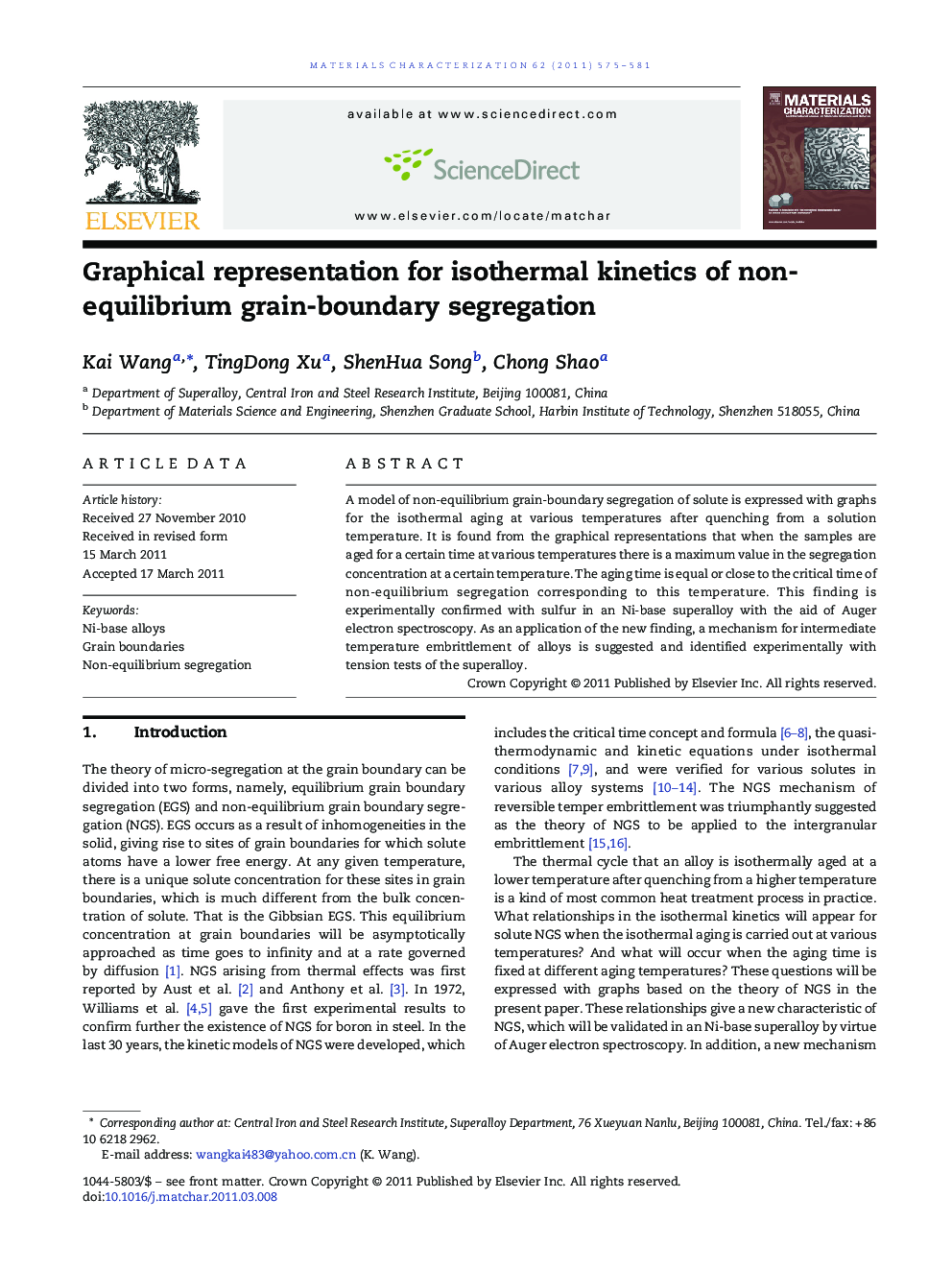| Article ID | Journal | Published Year | Pages | File Type |
|---|---|---|---|---|
| 1571799 | Materials Characterization | 2011 | 7 Pages |
A model of non-equilibrium grain-boundary segregation of solute is expressed with graphs for the isothermal aging at various temperatures after quenching from a solution temperature. It is found from the graphical representations that when the samples are aged for a certain time at various temperatures there is a maximum value in the segregation concentration at a certain temperature. The aging time is equal or close to the critical time of non-equilibrium segregation corresponding to this temperature. This finding is experimentally confirmed with sulfur in an Ni-base superalloy with the aid of Auger electron spectroscopy. As an application of the new finding, a mechanism for intermediate temperature embrittlement of alloys is suggested and identified experimentally with tension tests of the superalloy.
Research Highlights► A peak of solute segregation emerges at a temperature when aging for a certain time at various temperatures after quenching. ► The aging time is equal or close to the critical time of segregation at this temperature. ► This finding is experimentally confirmed in an Ni-Cr-Fe superalloy. ► A mechanism for intermediate temperature embrittlement of alloys is proposed.
